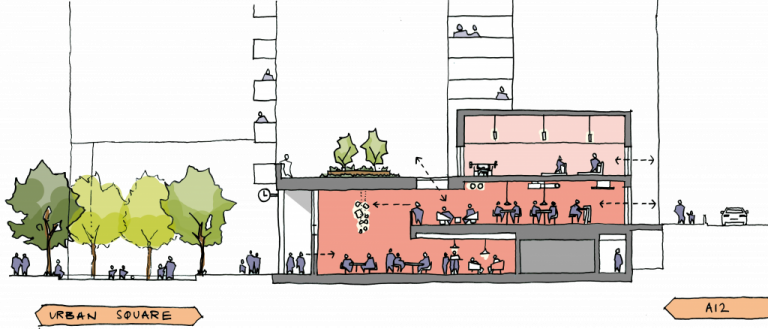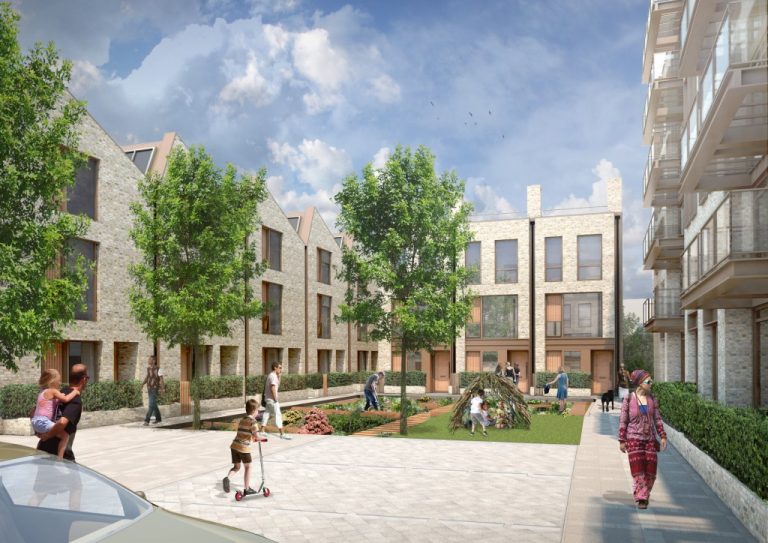The public realm can be at the forefront of tackling climate change
The government is aiming for UK net zero emissions by 2050, and landscape architecture can play a key role, says Donald Roberts of Assael Exteriors.
This month saw leaders from throughout the 53-nation Commonwealth gather in London to discuss trade, international development, human rights and the unfolding effects of climate change. Many of the nations that make up the Commonwealth are already seeing the far-reaching and often misunderstood effects of a rapidly changing climate on their coastlines, in their agricultural footholds and in their cities.
The prescient nature of climate change at this year’s summit led Claire Perry, the government’s clean growth minister, to announce that the UK will be reviewing its long-term emissions targets, aiming to be ‘net zero’ before 2050. An ambitious target such as this will require both short-term solutions and grander, structural changes that will alter all aspects of our lives, from what we eat, how we travel and how we expand and maintain the cities that we live and work in.

Cities will undoubtedly be at the forefront of climate action and the transition to a carbon-free economy in the UK and beyond. Currently, cities account for around 76 per cent of the world’s carbon emissions and 75 per cent of total global energy consumption, meaning that they have the most to gain from cleaner energy and a greater responsibility to act now, galvanising the change needed.
In order to secure the future of the cities, we need to harness the powers of urban design and landscape architecture. Within the built environment, landscape architects are in a fortunate position to be able to respond to the climate change’s challenges. We are well equipped and qualified to solve design problems with the tools of nature and have the advantage of being able to synthesise nature into urban environments. Good urban design is capable of blending the built into the natural environment, creating cleaner, more habitable cities.
By designing and responding at both global and local scales, landscape architects can consider natural processes, such as the movement of water, groundwater, soil, habitats, animals and the increasing effect of climate change on each. This is where landscape architecture provides the greatest benefit, by designing with adaptation and mitigation in mind.

At Assael Exteriors, we are working on a residential scheme in Bromley-by- ow within the jurisdiction of the London Legacy Development Corporation. Here, there is a wider picture; we need to develop landscape proposals that are connecting to a wider framework of spaces, and are aiming to stitch together the urban fabric.
For contemporary city dwellers, like those in Bromley-by-Bow, the public realm is their first daily interaction with the natural world. Bringing natural processes into these spaces is vital for the survival of cities. Once the public realm is understood as a conduit for humankind’s interaction with nature, it is put at the forefront of climate action in our cities. It has been a longstanding concept in architecture and planning that cities, like humans, are living, breathing entities.
In practice this is achieved by creating green corridors that link together existing external spaces, people and biodiversity. Using landscape architecture to create an urban mosaic of habitats and typologies, cityscapes can be reimagined. Dense planting and urban forests offer essential sources of carbon capture, while storm management systems can be used to recapture water’s historic role within cities.

The Olympic Park in east London is an ideal example of this, incorporating a sophisticated model of sustainable urban drainage. The site topography changed dramatically, forming plateaus for the venues and facilities above the river flood level. Biodiversity was also a key driver in the landscape design, with 10 habitat categories created to replace those lost.
Large-scale ‘living infrastructure’ is gaining traction in many cities throughout the UK as they begin to rewild urban landscapes and use lighter, more reflective building materials – a stark contrast to the common grey infrastructure. This approach is not only visually appealing, but has many other benefits including countering the heat island effect and reducing stormwater runoff rates with vegetation and water-retaining soils.
At the smaller, more local scale, we believe in the importance of urban household ‘vegetable gardens’ to reduce greenhouse gas emissions and increase food and financial security in deprived communities. These gardens create multifunctional landscapes that provide food and water security in inner-city areas, while improving community cohesion at the same time.
In a similar way, Assael has successfully integrated food-growing opportunities at the heart of Stokes Croft, Bristol, by creating a new public space that acts as a hub for the wider area. A shared allotment garden will encourage local food cultivation and contribute to vital carbon capture. In addition, sustainable design has been used throughout the scheme, incorporating biodiversity and creating opportunities for wildlife refuges and roof gardens.
By making conscious decisions to design landscapes that rise to the challenge of climate change, beyond typical approaches and regardless of scale, our profession can enhance the resilience of modern cities, while putting the natural world and its processes at the heart of our places.
This column, written by Senior Landscape Architect Donald Roberts, was published in the Architects’ Journal on 29 May 2018.